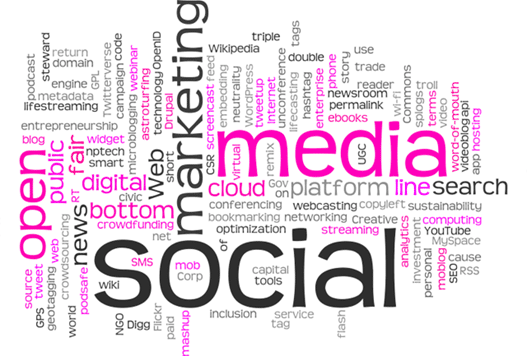
How to Use Interactive Content Marketing to Help Grow Your Business
HOW TO USE INTERACTIVE CONTENT MARKETING TO HELP GROW YOUR BUSINESS
The marketing game has changed. In the past, it was crucial to get your name and brand identity out there. Essential ingredients of a content marketing campaign were to keep your visibility high in social media, and to provide lots of information for your clients in your blogs and emails.
In other words, information flowed in one direction, without much active engagement by customers or potential clients.
Nowadays, if you’re going to attract and keep your clients’ attention, you need to develop a relationship with them that goes beyond the products or services you offer.
What is interactive content marketing?
As the name suggests, the main purpose of interactive content marketing is to encourage current and potential customers to interact with your brand.
Interactive marketing is a customer-oriented approach to marketing that engages the client and requires their participation.
Interactive marketing is basically a campaign that uses a “Call to Action” to invite a response, e.g., to “get a free quote” or “download a free e-book.”
This two-way dialogue is what makes the marketing process so much more dynamic and relevant than the one-way marketing of the past.
How has digital marketing changed over the past 10 to15 years?
To find out exactly how digital marketing has changed over the past 10 to15 years, we interviewed Stacy Mantle, Founder and CEO of AZ Soapworks LLC. Here’s what she had to say:
“Digital marketing is dramatically different from just a few years ago. In the past, we would put out our information in blog posts and do a single post on Facebook. These days, we have to write and promote these blog posts (and all interactive media) through multiple social media platforms.”
“Since all social media has become a ‘pay to play’ environment, that means we also need to heavily promote our posts to ensure they are seen. It’s a lot of work to get word out!”
TWFH: “How have you implemented interactive content marketing in building your business?“
Ms. Mantle: “We have a private Facebook group of product testers who try our products and send feedback. They are ‘rewarded’ with free products to use! We also post personality quizzes on Instagram that incorporate a kind of ‘augmented reality,’ i.e., where people can observe products while they’re being made and purchase in advance.”
TWFH: “How do you incorporate infographics as part of your interactive content marketing campaigns?“
Ms. Mantle: “Infographics are great tools but are more of a challenge to create. Essentially, within a visual (e.g., a flowchart), we embed a ‘click-through’ for different options a customer can choose. For example, ‘How often do you wash your hair?’, will lead to another series of questions, leading the client to the ideal product for their particular situation. At the same time, we get more information about that client.”
TWFH: “Why do you strive to increase customer engagement?“
Ms. Mantle: “Customers have approximately 8 seconds of attention span. The quicker we can grab them, the faster we get an order. Our goal is three-fold: to solve a customer’s problem, to entertain them, and to educate them.”
“We have learned the hard way that it’s necessary to invest in marketing, and these days especially in interactive content marketing, in order to get the word out and to engage with our client base.”
How can implementing interactive content marketing help a business?
Creating interactive content leads to more engagement, more leads, and more loyalty from your customers.

Customers are more willing to share their information with companies that go the extra mile to produce content that is genuinely helpful and engaging.
Through this type of interaction, you can create a valuable experience for the consumers, which is an added value beyond the purchase process.
You can ask their opinions and encourage them to feel as if they’re a part of the business. You can also offer them an educational or recreational moment through which you can improve the brand image.
The type of interaction you choose will depend on your objective and the means used to achieve it.
Here are some ways interactive content marketing can help:
- Encourages customer interaction with your brand. Interactive content marketing practices have proven to be very effective at increasing customer engagement. Particularly with eCommerce businesses, customer loyalty and conversion rates are also improved, thereby increasing revenue.
- Obtains quality information about customers. The basis of interactive content marketing lies in the ability to provide engaging actions (i.e., clicks or quiz responses) to customers and then develop marketing strategies based on those actions. This means that an action taken by a consumer should trigger a certain marketing initiative on the part of your brand.
- Increases chances of meeting customer needs. When your customer shows an interest in a product or service, you have the ability to respond to them. And for any feedback from a current or potential customer, there can be a content marketing reaction from the brand.
- Allows businesses to deliver interesting and immersive browsing and shopping experiences to customers. With infographics, quizzes, questionnaires, and other educational experiences delivered to clients, they remain engaged, entertained, and loyal to your brand.
How can your business incorporate more interactive content into your marketing strategy?
Much has been written about interactive content marketing in the past few years. If done correctly, it can help grow your business and add revenue to your bottom line.
But very little has been written about how to develop the underlying content marketing strategy and content creation that is crucial to your success.
Any tactic you can use to elicit a response from a customer can be considered interactive content marketing. You’ve likely been drawn in by some of these yourself, whether on social media or during an online shopping experience.
Below are just a few examples to consider for your campaign:
- Contests, giveaways, and new-customer discounts. Whether you offer a product or service, you can increase brand loyalty by providing an exclusive opportunity for a few “lucky” customers. Giveaways can generate potential leads when you offer your audience a chance to win an expensive or in-demand item. For prospective customers, offering a one-time discount can trigger a first-time purchase.
- Quizzes and questionnaires. If you want to learn what your customers want, one of the most valuable tools available nowadays is the ability to ask your customers directly about your products and services. Quizzes and questionnaires facilitate data collection through questions structured to arouse interest and generate feedback.
- Email marketing, blogs, and newsletters. For keeping your customers captivated and engaged, emails, newsletters, and blog posts are surprisingly effective tools for all businesses, regardless of size. Nonprofits use them to get the word out on everything from upcoming events to fundraising. Businesses use them to build their brands with interesting and informative content creation. Adding a link sharable to social media multiplies the effectiveness of these tools.
- Polls and surveys. Polls and surveys are probably the simplest and oldest form of interactive marketing. They’re a great way to get in touch with your audience but, despite their simplicity, you can also use them to build a genuine connection with your customers. The easiest way to use polls and surveys is to ask your audience for opinions about your product, service, or content. Often, businesses will offer a reward or discount coupon for participating in a marketing survey.
- Social media posts. According to the Content Marketing Institute, more than half the world (58.4%) uses social media. And on any given day, people spend an average of two hours and 27 minutes on those platforms. Your posts can be informative, contain a survey, give a discount on a new product, or offer many other options that encourage customer interaction.
- Interactive infographics. Interactive infographics are similar to traditional infographics but have an element of interactivity, such as animation effects triggered by the reader’s clicking and scrolling. If you have a lot of information and want to tell a good story, interactive infographics are the perfect vehicle, irresistibly enticing clients to explore your content.
- Calculators. Interactive calculators are online tools that require visitors to input data into a form in order to get an instant calculated answer. These answers are calculated based on custom formulas defined by your business. For example, a client could calculate interest on a mortgage loan, or measure body mass index for a diet plan, or set a budget for a home improvement project. The client is able to get their answer and your business gathers some data about that client.
How can a writing agency help?
The marketing game has changed: The days of just publishing blogs and social posts and calling it a day are long behind us.
But given all the different online marketing venues and platforms that exist today, it may seem a daunting task to develop a comprehensive interactive content marketing strategy from scratch.
What might be in the way of creating the content you need? Content creation requires focus and expertise. Perhaps you don’t have the skilled staff or enough time to devote. Or maybe you or your team don’t know what to write to engage your audience.
Hiring a writing agency could lift this burden and rapidly increase your customer engagement, provide more leads and sales, and earn more loyalty from your clients.
Professional writing agencies have the writers, researchers, and expertise needed to produce all forms of interactive content marketing and can also assist with planning your overall marketing strategy.

Final Thoughts
Creating interactive content leads to more engagement, more leads, and more loyalty from your customers. Customers are more willing to share their information with companies that go the extra mile to produce content that is genuinely helpful and engaging.
When you hire a writing agency, you can rest assured that communications with your clients will be educational and entertaining — and most importantly, engaging.
If you would like to learn more about how to hire a writing agency to create and help implement an interactive content marketing strategy for your organization, please don’t hesitate to contact one of our experts.
Related Content
- 0 Comment
Subscribe to Newsletter
- How Can SharePoint Be Used To Organize and Disseminate SOPs?
- Planning the Perfect Genealogy Research Trip: A Step-by-Step Guide
- From Silly to Awesome: How Words Change Meaning Over Time
- The Psychology of Font Choice: How Typography Impacts Content Engagement
- How to Distribute SOPs for Maximum Usability





